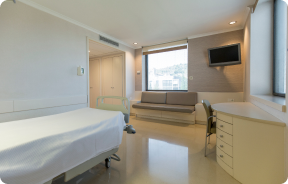Language selector
Language selector

Consultorio

Castro Domínguez FranciscoReumatología
- ReumatologíaCentro Médico Teknon
 ReumatologíaHospital Universitari Sagrat Cor - Centro Médico Teknon
ReumatologíaHospital Universitari Sagrat Cor - Centro Médico Teknon
Cavus foot, also known as high-arch foot, is a condition characterized by an unusually high arch in the foot. This condition can cause several symptoms and may require treatment.
Symptoms:
- Pain: Pes cavus can cause pain, particularly in the arch, ball of the foot, or heel.
- Instability: High arches can cause instability in the foot, making it difficult to balance and walk.
- Claw toes: The condition can cause claw or hammer toes, where the toes curl downward.
- Corns and Calluses: High-pressure areas on the bottom of the foot can develop corns or calluses.
- Ankle instability: High arch can affect the alignment of the ankle joint, which could lead to ankle sprains and instability.
Causes:
- Neurological conditions: Most cases of pes cavus are associated with underlying neurological conditions that affect the muscles and nerves that control the foot. Conditions such as Charcot-Marie-Tooth disease, polio, or cerebral palsy can contribute to pes cavus.
- Muscle Imbalances: Conditions that result in muscle imbalances, where certain muscles become too dominant or weakened, can lead to foot deformities such as pes cavus.
- Trauma: Injuries to the foot or ankle can cause changes in the structure of the foot, leading to a high arch.
Diagnosis:
- Clinical evaluation: A healthcare provider will perform a physical examination to evaluate arch, gait, and the presence of any symptoms.
- Neurological evaluation: In many cases, an evaluation of nerve function, such as electromyography (EMG) and nerve conduction studies, may be performed to identify underlying neurological conditions.
- Imaging studies: X-rays may be used to evaluate the structure of the foot and the alignment of the bones.
Treatment:
Conservative treatment:
- Orthotics: Custom or over-the-counter orthotic insoles can help provide arch support and redistribute pressure on the foot.
- Shoe Modification: Choosing shoes with proper cushioning and arch support is essential to relieving pain and discomfort.
- Physical therapy: Physical therapy can provide exercises and techniques to improve foot function and relieve pain.
Reinforcement: In some cases, ankle foot orthoses (AFOs) may be recommended to provide additional support and stabilize the foot and ankle.
Surgery: In severe cases, or when conservative treatments fail, surgical intervention may be considered. Surgical procedures aim to realign bones, transfer tendons, or provide additional stability.



































